Our Exterior Painting Process
CertaPro Painters® of Maine
CertaPro Painters® of Maine Exterior Painting Process
Exterior house painting is the most effective way to boost your home’s value and leave it looking brand new. At CertaPro Painters® of Maine we use an efficient and streamlined process to give your home a complete makeover without any hassle, headache, or worry on your part. With over 200 glowing reviews on Google see why our clients trust us with their house painting projects. Learn more about our process below and how we can update your home exterior into something you’ll be proud of!

1. Meet and Greet
Our Job Site Supervisor meets you at your home to discuss the scope of the project. We review the CertaPro Painters® Proposal and determine the areas that will be painted.
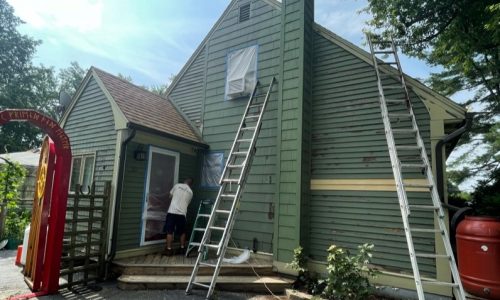
2. Set up
We unload our equipment and set up the staging area. Non-painted surfaces are covered, protecting them from possible stray paint.

3. Prepare Surfaces
Our crews perform necessary repairs, scrape, sand, and wash the surface. We apply primer in preparation for the next step.
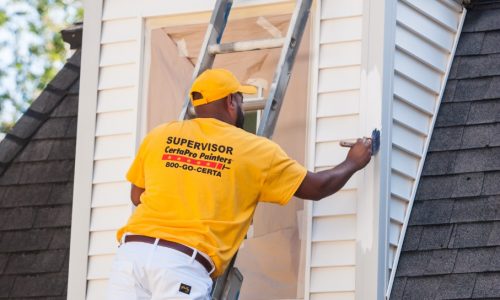
4. Painting
We confirm your desired paints and apply them with brushes, rollers, and sprayers, using only the most premium quality paints.

5. Final Inspection
After our own inspection, the Job Site Supervisor will walk with you around the exterior to inspect and review the work. Final touch-ups are performed as needed.

6. Clean Up & Review
Painting materials and coverings are removed, any outdoor furniture or items are returned to their original position. All garbage is removed. We will review the project completion process with you.
Book Your Estimate Today!
At CertaPro Painters® of Maine, our trained professional painters can transform your home’s exterior into something you can be proud of. Book your free exterior painting estimate now!

Sheen & Color Options
Sheen "Rules of Thumb"
- Flat finishes are the best at hiding flaws and are the easiest to touch-up.
- On the other hand, semi-gloss is the most durable and washable finish, but it's hard to touch-up and shows off flaws very visibly.
- When viewed at an angle, a high sheen finish can alter how a color is perceived, due to the reflection of more light.
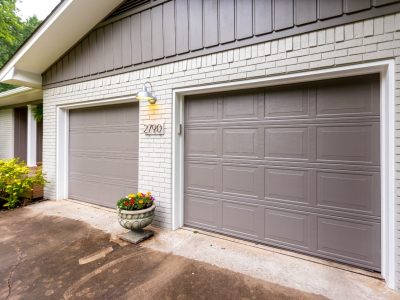
Siding Sheen
- Sidings are typically a flat finish to minimize visual flaws.
- An added benefit of flat finishes is they allow water vapor to pass through the coating system more naturally – limiting premature failure.
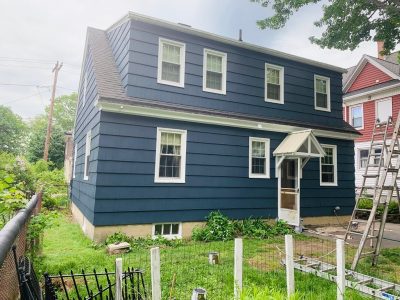
Trim & Door Sheen
- Satin is the most popular finish for trim since it isn’t as shiny as semi-gloss and still highlights detail.
- Doors are typically semi-gloss to give them added beauty and durability
- Consider a satin finish if the door is in rougher shape so the flaws are not highlighted.

Colors
- The color choices are endless! Take your time and enjoy the process. The color decisions you make will have the most dramatic effect on the final appearance of your home.
- Color consultation and Visualizer tools are available if you are having a tough time making that final decision.
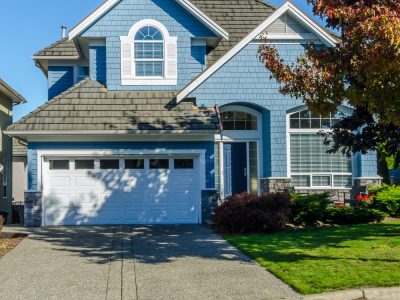
Great communication. Got our barn painted very quickly and professionally. We had a great experience and the price was right.
- Leslie S. | Eliot, ME
Choosing The Best Paint or Stain for Your Home
Whether our teams are painting clapboard siding, staining shingles on your roof, or staining your deck, there are many factors to consider when choosing a paint or stain that will last for years. Learn more about how surface prep and application go a long way towards making your property look its best – and why CertaPro Painters® of Maine are the experts to get the project done right!

Surface Preparation and Paint Adherence
Proper surface preparation is crucial for ensuring that paint or stain adheres well and lasts longer. Smooth surfaces – like the smooth side of clapboards and areas with hard grain – struggle to hold onto coatings leading to premature peeling or flaking. “Mill glaze,” a layer commonly formed on cedar clapboard during the milling process, also hinders adhesion. Addressing these issues may involve full paint removal, wire brushing, or sanding to properly prepare the surface for coating. Even then, rough surfaces typically provide a better grip for paint or stain.
The Right Application Method: Spraying or Brushing
Selecting the appropriate method for applying paint depends on various factors, including the type of coating and environmental conditions. Spraying is most effective at covering large areas quickly when there is no wind interference. Brushing is ideal for small, detailed areas that require precision. In some cases, a combination of spraying and back brushing can ensure that coatings penetrate deeply into rough surfaces. Ultimately, the method chosen should align with the specific needs of the project, the environment, and the desired finish chosen by the client.
Deck Maintenance for Longevity
Decks require regular maintenance to keep them looking their best. The key to reducing this upkeep is choosing the right type of stain. Semi-transparent oil stains are the best choice for longevity; they penetrate the wood, wearing away very gradually and minimizing noticeable peeling. Future maintenance is a breeze when all that is required is washing the deck and reapplying the stain. In contrast, solid stains and paints sit on top of the wood and are more prone to peeling. Eventually, when the deck needs refinishing it will require more intensive prep work, including scraping and sanding, in addition to standard washing. Some homeowners prefer solid stains as they can match the house color perfectly, but semi-transparent stains offer a more durable and low-maintenance option for homeowners looking to cut costs in the long run.
By clicking next or submit you agree to receive phone, email, or text communication from us per our Terms of Use and Privacy Policy. Message/data rates apply. Consent is not a condition of purchase. We do not share your personal information with third parties for marketing purposes without your consent.


